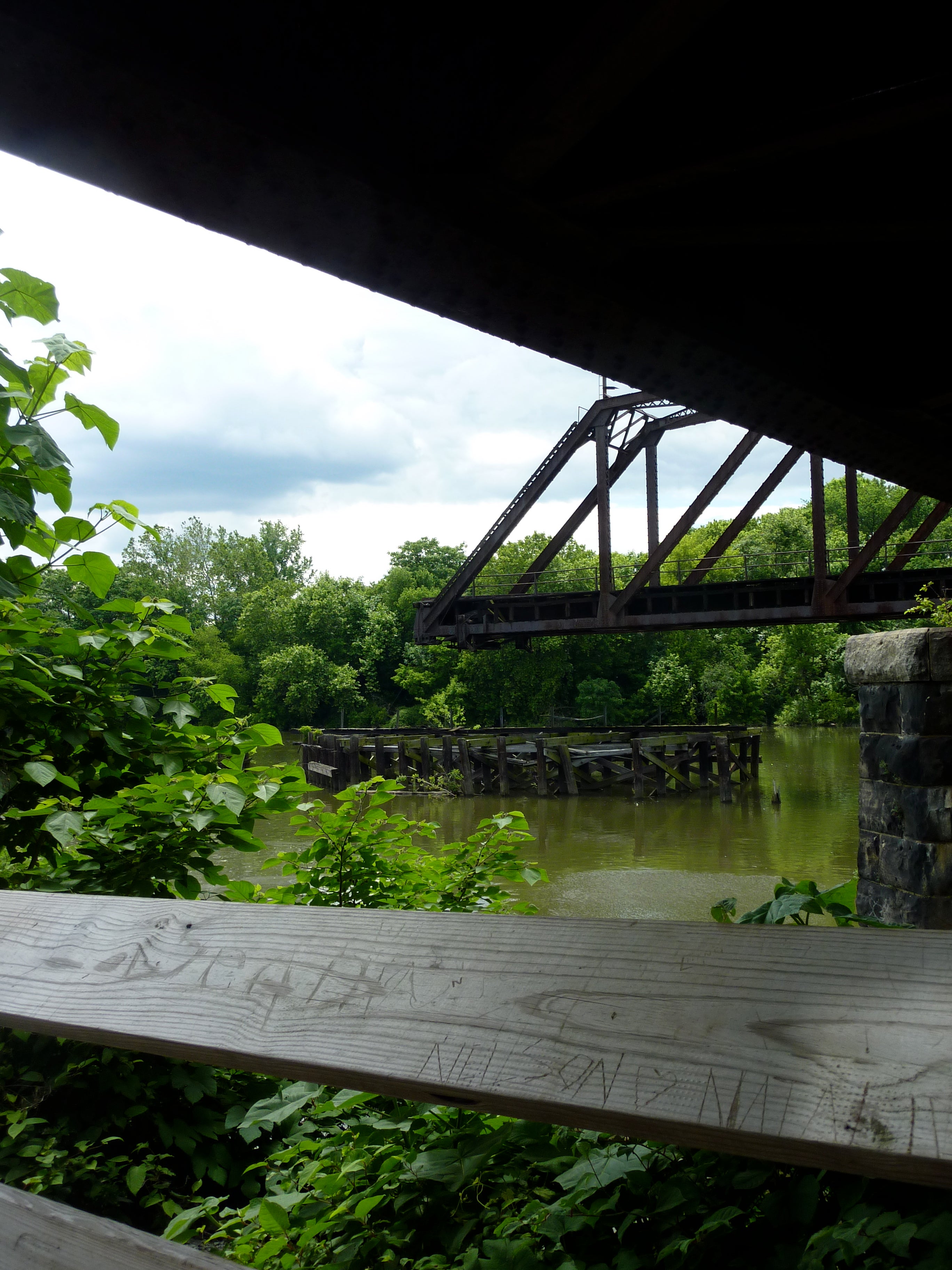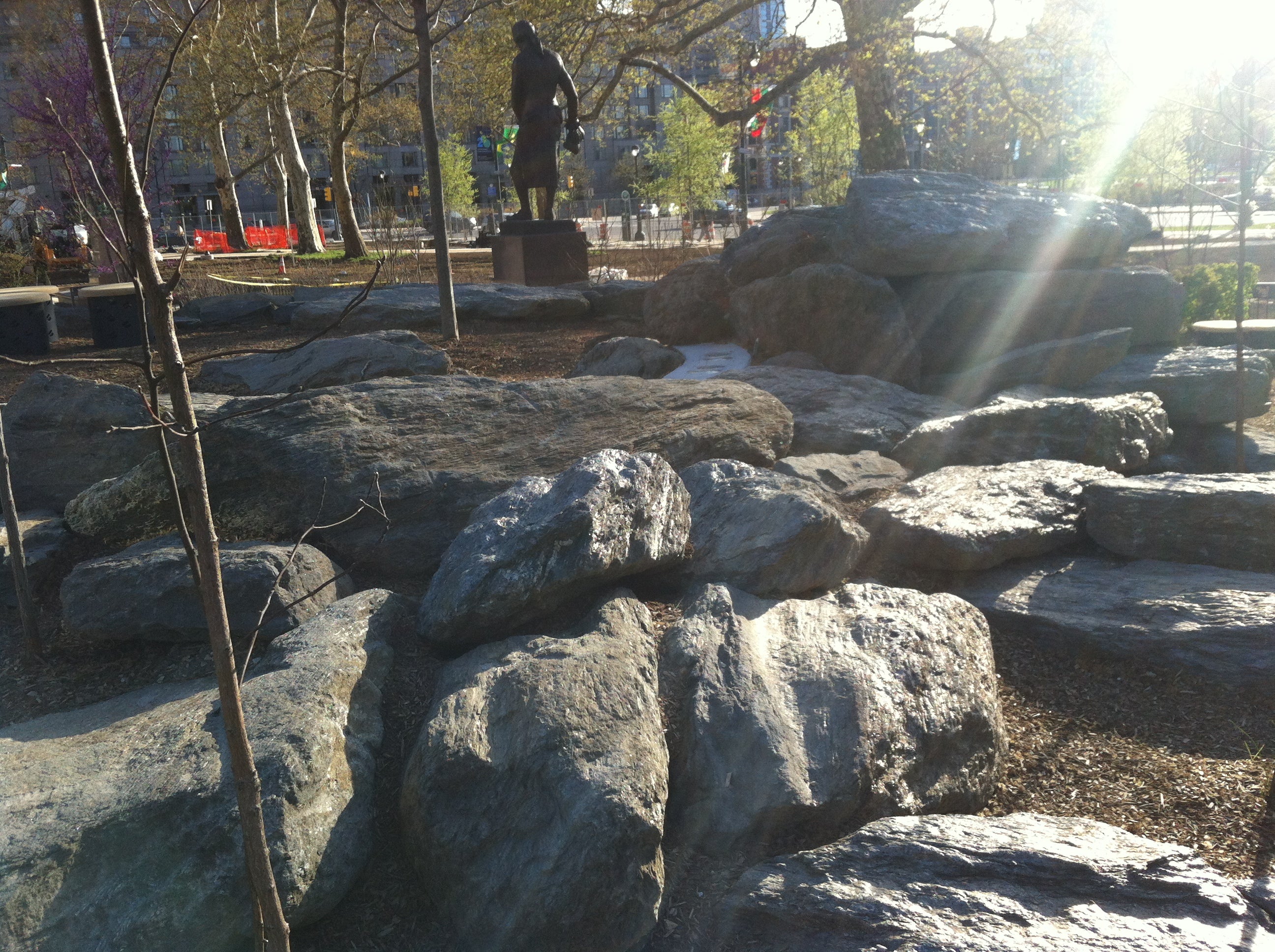Parks & Recreation adds four new parks this season
By the time we reach Independence Day weekend, the Philadelphia Parks and Recreation Department will have unveiled four new parks in just under two months.
The spate of new spaces is “unprecedented” in the history of the system, says Mark Focht, first deputy commissioner of the department.
“It’s largely a coincidence of timing,” Focht observes, adding that each has come about for vastly different reasons and via diverging paths. “They have nothing in common, except that they in some way advance the goals put forth by Green 2015 and the city’s other open space initiatives.”
The first to open, a redesign of Logan Square’s Sister Cities Park (funded, managed and programmed by the Center City District), is the final installment in a $20 million investment in streetscape improvements along the Benjamin Franklin Parkway.
Lardner’s Point Park and Grays Ferry Crescent tackle land on the Delaware and Schuylkill rivers, respectively. The still-to-come Hawthorne Park (opening on July 5) is a basic neighborhood park in an emerging greater Center City neighborhood.
Sister Cities Park
With landscape architecture by Studio Bryan Hanes, the heavily programmed, $5 million park is an instant hit – and it keeps getting better.
After parents carped about the price of a wooden toy boat rental, it was quickly reduced from $7 per half-hour to $5.50. The lawn has filled in and the yellow tape guarding it has been removed. Office workers have discovered the Milk and Honey cafe, tipping the park to the inter-generational mix that makes Franklin Square so appealing.
Similarly to the Square, Sister Cities represents a major overhaul of an extant park. The other three projects are completely new.
Lardner’s Point Park
The first new park on the North Delaware, the $1.5 million, 4.5-acre Lardner’s is an estuary restoration project developed with monies awarded the state after an oil tanker spill in 2002.
Pegged to become part of a 9-mile greenway — some of which runs along the old Kensington and Tacony rail tracks — that will connect to the Central Delaware, it features wetlands and an already heavily-used fishing pier.
Designed by Baltimore’s Biohabits, the park is tucked under the Tacony-Palmyra bridge and “exhibits a number of the features that will be along the entire trail,” says Focht.
“Solar lights, benches, trash receptacles, landscape signatures — all are revealing themselves for the first time at Lardner’s,” he explains. Each trail will be tackled by a different design team, but will be finished with this palette of materials.
Grays Ferry Crescent
On the southwestern side of town, in the shadows of sewage plants and shattered industrial sites, Grays Ferry Crescent fulfills a similar mission: to serve as a medium-sized piece of a larger jigsaw puzzle.
In this case, the larger whole is the ever-evolving Schuylkill Banks. The city acquired and then sold the land in the 1990s, keeping a sliver of prime waterfront for eventual development as a park.
Fifteen years later, here it is.
Clocking in at 11 acres, the $2.8 million project hugs both sides of a curving stretch of river near 34th and Wharton streets. It officially opened earlier this week, but fishermen and strollers have been lazing away the afternoon here for awhile, lured by the sweeping paths and lush meadows of wildflowers.
Many of them grew up around here, others come from across the river, closer to Bartram’s Gardens. “This is a blessing,” said one 55-year-old who identified himself only as Tyrone. He and a few other solo reelers were idly bringing in perch and tossing them back out.
“This used to look like that,” Tyrone continued, indicating the riverside across the way, smothered in undergrowth and weeds. “You couldn’t really get close to the river — now you can. I’ve been coming here maybe once a week. It helps give me peace of mind.”
Eventually, the plan is for this piece, designed by Simone Collins Landscape Architecture of Norristown, to serve as a link between the river bank trail that extends from Center CIty, about 1.5 miles northeast, and Bartram’s Garden, two miles southwest.
For that to occur, says Focht, there needs to be a bridge across the river. One option, currently under study, is to reuse the picturesque trestle now indefinitely suspended in the open position.
Hawthorne Park
You’ll find no trails or wetlands, no piers or spray fountains at Hawthorne Park at 12th and Catharine streets, just “people sitting down and playing cards or chess,” as Patricia Bullard, president of the Hawthorne Empowerment Coalition, envisions it.
“I’m really looking forward to having a quiet place to go read a book or have a good talk,” Bullard continues. “This will be a passive park and that’s the way we wanted it.”
The park’s been in the works for more than a decade, since the Philadelphia Housing Authority imploded the MLK Projects and an already-empty lot was set aside to be developed as a park after replacement housing was erected.
Along the way, the Pennsylvania Horticultural Society, local foundations, and the city have gotten involved, and at one point industrial design students at the University of the Arts even conducted several charrettes.
Ultimately, the $1.6 million park’s design was handled by locally-based LRSLA Studio — lately of The Porch in University City. It’s a thoroughly urban corner space that features a wide swathe of lawn and a central paved plaza that can double as a stage.
Oriented toward the town homes that face it, the park is situated to make the best of the skyline views just beyond them. It is, says Bullard, “an exciting addition to the neighborhood that we’ve been waiting a long, long time for.”
Coming Up
Further down the line — probably in 2014, according to Focht — one more new park will be added to the mix in North Philadelphia, at 16th and Master streets, near Temple University.
Developer Community Ventures plans on building 39 affordable housing units on a city-owned site and has expressed a desire to leave room for open space. Ingersoll Park, designed by Francesco Cerrai, a landscape architect with the Department of Public Property, comes out of Green Plan Philadelphia, which targets new open space in underserved areas of the city. Like Hawthorne Park, it has a heavy storm water management component.
Other than this park, however, the Department will concentrate on meeting new open space and storm water management requirements by greening parks and rec centers and school district property, says Focht.
But, he adds, as at Grays Ferry Crescent and Lardner’s Point Park showed, “special cases arise. You never know what will present itself — and we’re always looking for new opportunities.”
Contact the reporter at jgreco@planphilly.com and follow her on Twitter @joanngreco
WHYY is your source for fact-based, in-depth journalism and information. As a nonprofit organization, we rely on financial support from readers like you. Please give today.















